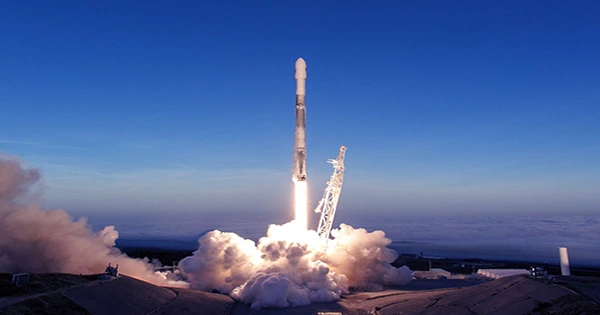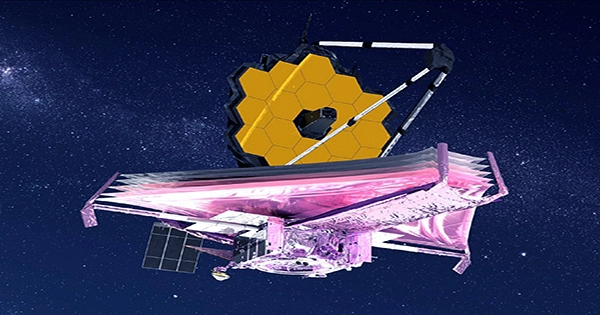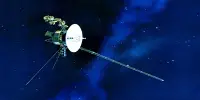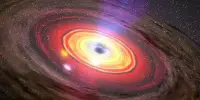After punching a hole in the ionosphere, a SpaceX rocket left behind an aurora-like crimson glow, which a photographer caught.
The ionosphere is the topmost layer of Earth’s atmosphere, approximately 50 to 400 miles above the surface, where space begins and aurora lights form.
Jeremy Perez photographed the crimson afterglow of the pierced ionosphere alongside the Milky Way Galaxy on July 19. The hole was produced by the Falcon 9 rocket’s exhaust fumes.
“After the rocket passed overhead, a red fluorescent glow expanded southward and crossed the Milky Way,” Perez explains to SpaceWeather. “It was visible for almost 20 minutes.”
Perez says on Twitter that from his vantage point in the San Francisco Volcanic Field near Flagstaff, Arizona, the red light was not particularly brilliant.
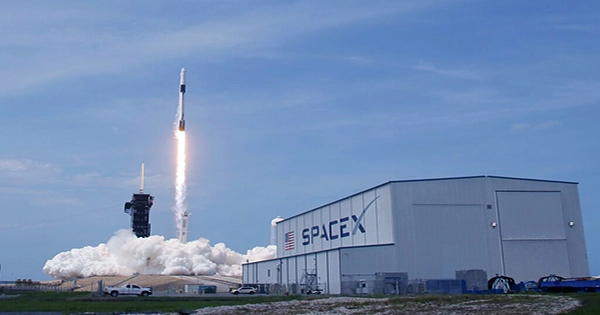
“This was not an obvious visual sight by this point, and it really relied on the camera to bring it out,” Perez adds.
“Down there, the San Francisco Peaks and Flagstaff light dome provide a landing point for the Milky Way.”
The red glow is caused by the rocket, which launched from Vandenberg Air Force Base in California, blasting a hole in the ionosphere – and this isn’t the first time this has happened.
“This is a well-studied phenomenon when rockets are burning their engines 120 to 190 miles (200 to 300 kilometers) above the Earth’s surface,” Boston University space physicist Jeff Baumgardner told SpaceWeather.
“The red glow appears when exhaust gases from the rocket’s second stage rapidly recombine in the ionosphere.”
The ionosphere is made up of charged particles known as ions and is where aurora lights originate. Solar plasma strikes the ions, producing stunning aurora colors.
Rockets emit water and carbon dioxide as they move, altering the ionization of the atmosphere. According to Newsweek, the trademark red color of the hole in the ionosphere is caused by oxygen ions mixing with rocket exhaust fumes, which emits the same light as a red aurora.
A breach in the ionosphere last Wednesday disrupted GPS devices but only by a few feet.
In 2018, Charles C.H. Lins warned Ars Technica that ionosphere holes could impair GPS even more – by up to 65 feet.
“Humans are entering an era in which rocket launches are becoming more common and commonplace due to the lower cost of reusable rockets,” Lin added.
“In the meantime, humans are creating more powerful rockets to transport cargo to other planets.” These two elements will eventually have a greater impact on the middle and upper atmosphere, which is worth noting.”
